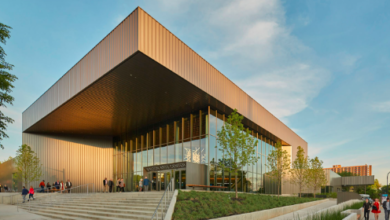The Future of Heritage Restoration: Balancing Sustainability with Preservation in Australia

Heritage restoration in Australia stands as a testament to the country’s commitment to preserving its rich historical tapestry. This intricate process involves a careful consideration of both maintaining the structural integrity and historical significance of buildings while integrating sustainable practices to ensure their longevity. As we move further into the 21st century, the conversation around heritage restoration pivots towards striking an essential balance between sustainability and preservation.
Understanding Heritage Restoration in Australia
Heritage buildings in Australia serve as portals into the past, offering insights into the country’s architectural evolution and cultural narratives. The process of heritage restoration in Sydney and other cities entails meticulous efforts to conserve and restore buildings to their former condition, ensuring they continue to tell their stories for generations to come. Heritage restoration serves not only to preserve aesthetics but also to uphold the historic value integral to Australia’s cultural identity.
The Role of Sustainability in Heritage Buildings
Sustainability in restoration practices has gained significant traction, marking a shift towards eco-friendly and resource-efficient methodologies. Sustainable heritage restoration reflects a broader commitment to environmental stewardship while acknowledging the importance of conservation. The process involves using sustainable materials, minimising energy consumption, and incorporating modern techniques that enhance the building’s performance without detracting from its historical essence.
See also: Artificial Intelligence and Plagiarism Detection
Challenges of Merging Sustainability with Heritage Conservation
While the benefits of sustainable practices are clear, integrating them into heritage restoration poses unique challenges. There is a delicate balance between modernising these buildings to meet current environmental standards and preserving their original features. In addition, strict heritage conservation laws often impose limitations on the extent of renovations permissible for heritage-listed properties, making the task even more complex.
Innovative Approaches to Sustainable Heritage Restoration
The future of heritage restoration in Australia will rely heavily on innovative approaches that merge sustainability with preservation. These include cutting-edge building techniques, adaptive reuse strategies, and the use of traditional materials in tandem with sustainable alternatives. Efforts are also being made to implement energy-efficient systems that offer the dual benefits of reducing environmental impact and lowering operational costs.
Project Management: A Cornerstone of Restoration Success
Effective project management is fundamental to the success of heritage restoration projects. Experienced project management companies in the construction industry have the expertise to oversee the multifaceted aspects of restoration projects, ensuring that both sustainability and preservation objectives are met. Utilising professional project management services is crucial in coordinating the often complex processes involved in heritage restoration, from planning and approvals to material sourcing and execution.
The Economic Implications of Heritage Restoration
Heritage restoration activities not only protect cultural assets but also contribute significantly to the economy. Investment in heritage buildings can revitalise communities, create jobs, and stimulate tourism. Moreover, sustainably restored heritage buildings have the potential to command a premium in the property market due to their historic significance, unique character, and improved energy efficiency.
Commercial Building Remedial Services
No discussion on heritage restoration would be complete without acknowledging the critical role of commercial building remedial services. Specialists in commercial building remedial services bring a wealth of knowledge in repairing and upgrading existing structures. They are particularly important when it comes to addressing common issues found in heritage properties, such as damp, structural weaknesses, and material decay. Their expertise ensures that buildings not only stand the test of time but also meet current safety and sustainability standards.
The Importance of Community Engagement
Community engagement is a vital component of heritage restoration projects. Engaging with local communities helps to instil a sense of ownership and pride in the restoration efforts, ensuring that these projects are not only about the buildings themselves but also about the people they serve. Further, community input can provide valuable insights into the historical context and significance of heritage sites, enabling a more informed approach to restoration.
Government Initiatives and Funding Support
The Australian government recognises the importance of heritage restoration through various initiatives and funding programmes. These programmes support the restoration of listed heritage buildings by providing financial assistance, ensuring that important historical sites can be maintained and enjoyed by current and future generations.
Education and Skills Development
An essential factor in the progression of heritage restoration is the development of specialised skills and knowledge. Educational institutions and industry bodies must continue to offer courses and training to equip tradespeople and professionals with the necessary expertise in traditional building techniques as well as sustainable practices.
The Role of Technology in Heritage Restoration
Advancements in technology play a pivotal role in heritage restoration. From 3D scanning and modelling, which allows for precise replicas of original features to be made, to moisture monitoring systems that can prevent the deterioration of materials, technology is helping to preserve the integrity of heritage buildings while enhancing their functionality and sustainability.
The International Perspective
Australia’s approach to heritage restoration doesn’t exist in a vacuum. Examining international best practices and collaborating with global experts can provide valuable insights and alternative methods that further enrich Australia’s heritage conservation efforts.
Looking Ahead
The future of heritage restoration in Australia hinges on the successful integration of sustainable practices with preservation principles. As the country continues to refine its approach to conserving its historical treasures, it is crucial that stakeholders from project management companies, remedial service providers, government bodies, and local communities work collaboratively to achieve outcomes that serve both the past and the future.
By fostering a shared responsibility and commitment to sustainability, Australia can ensure that its heritage buildings are not only preserved for their historical value but also serve as exemplars of environmental responsibility and sustainability for decades to come.




